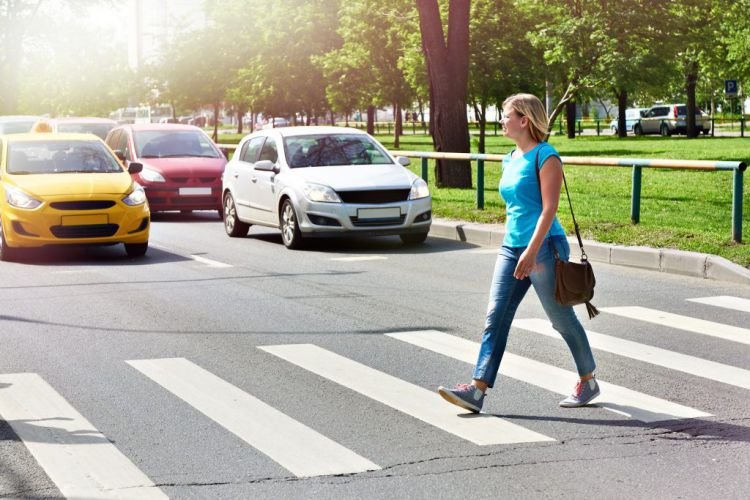 San Diego, with its picturesque coastline, parks, and vibrant urban centers, invites residents and visitors alike to explore on foot. Walking in the city provides an intimate experience of its many attractions, from historic neighborhoods to bustling shopping districts. Yet, like any major city, San Diego poses challenges to pedestrians, from navigating complex intersections to understanding one’s rights when crossing busy streets.
San Diego, with its picturesque coastline, parks, and vibrant urban centers, invites residents and visitors alike to explore on foot. Walking in the city provides an intimate experience of its many attractions, from historic neighborhoods to bustling shopping districts. Yet, like any major city, San Diego poses challenges to pedestrians, from navigating complex intersections to understanding one’s rights when crossing busy streets.
Being informed and proactive can make all the difference. Whether it’s a leisurely stroll down the Embarcadero or a brisk walk through the Gaslamp Quarter, understanding pedestrian laws and rights is essential. And, if the unforeseen happens and a pedestrian accident occurs, the guidance of pedestrian accident attorneys serving all over San Diego becomes an invaluable asset in navigating the complexities of the legal landscape.
Understanding Pedestrian Rights in San Diego
San Diego, a bustling metropolis frequented by both residents and tourists, witnesses a significant footfall on its sidewalks and crosswalks every day. With such a dense population navigating the streets, it becomes imperative for individuals to understand and exercise their rights as pedestrians. California law, with its specific mandates, ensures that those on foot are protected and given due consideration.
Under this law, several rights are accorded to pedestrians. Notably:
- They have the right of way at crosswalks, meaning vehicles must stop or slow down to let them pass safely.
- They are permitted to cross at any point of the street. However, when not crossing at a designated crosswalk—marked or unmarked—they must yield to oncoming vehicular traffic.
- In areas where sidewalks are absent, pedestrians have the right to walk along the road. But they must do so facing the traffic, enhancing their visibility and safety.
While these provisions are in place for protection, pedestrians are not absolved from responsibilities. It’s crucial to be cautious and avoid taking abrupt actions, such as suddenly stepping off the curb, which might put them in harm’s way or make it difficult for drivers to react promptly.
The Role of Expert Legal Counsel
In the moments following a pedestrian accident, victims are often enveloped in a whirlwind of emotions and uncertainty. The immediate shock from the physical trauma is swiftly compounded by the daunting realization of the potential emotional and financial burdens that lie ahead. For many, this situation can feel insurmountable, as they grapple with both the pain of the accident and the looming legal complexities. In such turbulent times, the guiding hand of a seasoned pedestrian accident attorney emerges as a vital lifeline, helping victims navigate the maze of legal proceedings with confidence and clarity.
These attorneys are more than just legal counselors; they’re skilled professionals who combine their vast knowledge of pedestrian laws with a genuine commitment to their client’s well-being. Their profound understanding of legal nuances ensures that victims are not shortchanged, especially when facing the bureaucratic hurdles of insurance claims. They meticulously gather evidence, consult with medical professionals, and craft compelling narratives, all in a bid to secure rightful compensation.
However, their role extends far beyond legal strategizing. As champions of justice, they embody the fervent advocacy that every victim needs, especially when pitted against formidable opponents like insurance companies. Whether it’s through strategic negotiations or assertive courtroom presentations, these attorneys are unyielding in their quest for justice. They not only seek redress for the current hardships their clients face but also work diligently to ensure such tragedies are deterred in the future, making the streets safer for all.
The Importance of Legal Action Post-Accident
When involved in an accident, the immediate aftermath can be chaotic and disorienting. In such scenarios, legal action might not always seem like a priority. However, the decision to pursue justice through legal means can have implications that reverberate beyond just the individuals directly involved. Here’s a more in-depth exploration of why seeking legal recourse is paramount:
- Recovering Financial Stability: Accidents come with unexpected burdens—medical treatments, therapy sessions, rehabilitation, and sometimes, long-term care. Coupled with potential loss of wages due to time off work, financial strain can quickly escalate. Legal action offers victims a pathway to obtain the financial support they need to cover these expenses, ensuring that the incident doesn’t permanently derail their economic stability.
- Establishing Accountability: When individuals or institutions are held legally responsible for their actions, it serves as a strong signal to society at large. Legal repercussions underscore the consequences of negligence and reinforce the notion that carelessness has tangible consequences. The ripple effect of this accountability can influence behavior, encouraging more conscientious actions by others, and establishing a culture of responsibility.
- Shaping Public Discourse: High-profile legal actions often find their way into the media spotlight. Even if they don’t, local communities tend to discuss and dissect the events leading up to, and following an accident. By taking legal action, victims can shape this narrative, highlighting the challenges pedestrians face and promoting discussions on improving safety. Over time, these conversations can influence public policy, leading to tangible changes in infrastructure or regulations.
- Championing Safety Initiatives: Beyond just highlighting the issues, legal actions serve as a clarion call for better safety standards. They underscore the human cost of inadequate safety measures, pushing for more robust pedestrian protections. Every legal action contributes to building a body of case law that prioritizes and values pedestrian safety.
- Personal Healing and Closure: The psychological impact of accidents is profound. Victims grapple with trauma, anxiety, and sometimes, feelings of anger or injustice. The legal process, while at times challenging, offers a structured means of addressing these emotions. Through it, victims can seek and often obtain a sense of justice, which can be a pivotal step in their healing journey. Knowing that those responsible have been held to account can provide solace and a sense of closure, allowing victims to focus on their recovery and future.
The decision to take legal action post-accident isn’t just about obtaining compensation—it’s about advocating for change, emphasizing the sanctity of life and personal safety, and furthering a broader societal commitment to protecting its most vulnerable road users.




